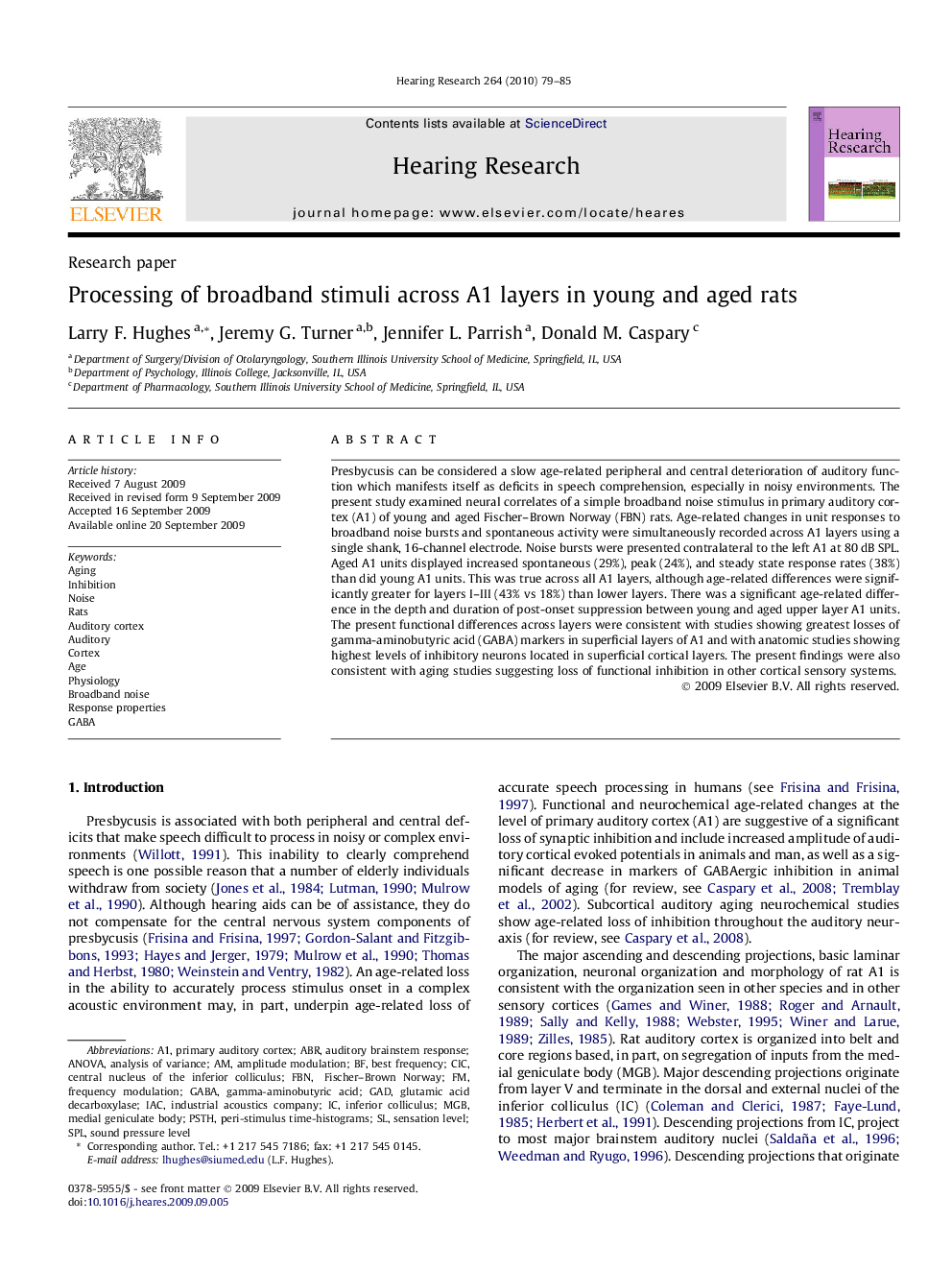| Article ID | Journal | Published Year | Pages | File Type |
|---|---|---|---|---|
| 4355636 | Hearing Research | 2010 | 7 Pages |
Presbycusis can be considered a slow age-related peripheral and central deterioration of auditory function which manifests itself as deficits in speech comprehension, especially in noisy environments. The present study examined neural correlates of a simple broadband noise stimulus in primary auditory cortex (A1) of young and aged Fischer–Brown Norway (FBN) rats. Age-related changes in unit responses to broadband noise bursts and spontaneous activity were simultaneously recorded across A1 layers using a single shank, 16-channel electrode. Noise bursts were presented contralateral to the left A1 at 80 dB SPL. Aged A1 units displayed increased spontaneous (29%), peak (24%), and steady state response rates (38%) than did young A1 units. This was true across all A1 layers, although age-related differences were significantly greater for layers I–III (43% vs 18%) than lower layers. There was a significant age-related difference in the depth and duration of post-onset suppression between young and aged upper layer A1 units. The present functional differences across layers were consistent with studies showing greatest losses of gamma-aminobutyric acid (GABA) markers in superficial layers of A1 and with anatomic studies showing highest levels of inhibitory neurons located in superficial cortical layers. The present findings were also consistent with aging studies suggesting loss of functional inhibition in other cortical sensory systems.
